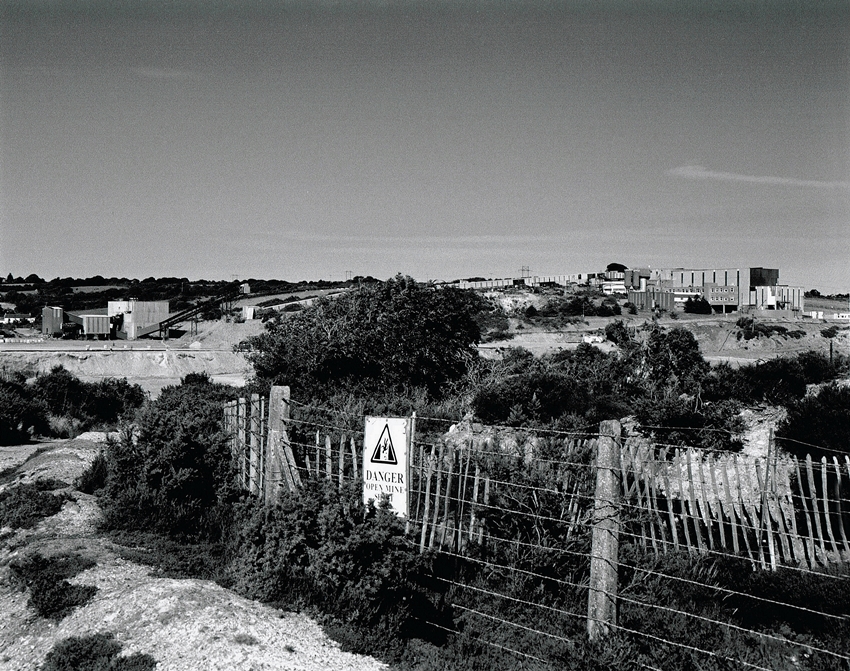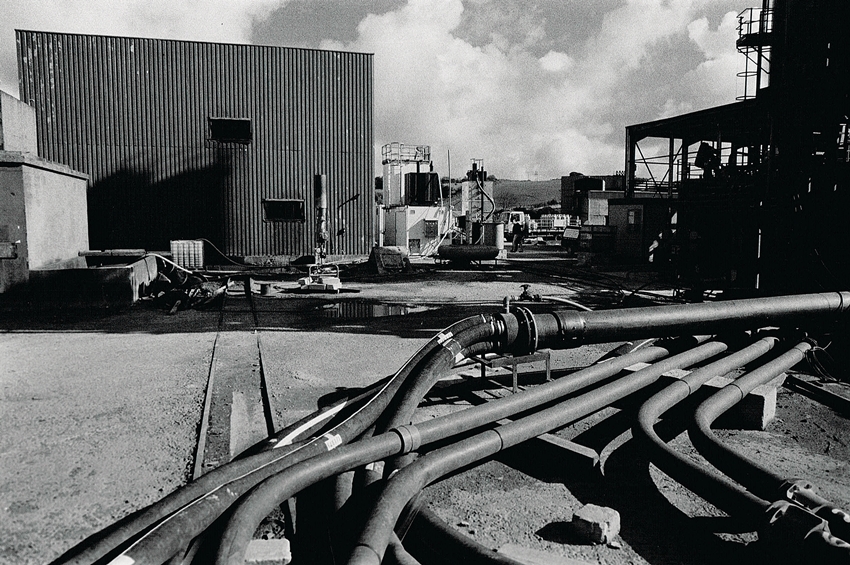Wheal Jane Mine Gallery 1: The majority of the images on this page were taken during one of my visits to the site during summer of 1992. The mine had only been officially closed for a short time, I am very sad that I never had the chance to get underground there.
My thanks go to Mr Paul Chesterfield who has supplied some extra information on the images. He was an electrician employed at the mine when it was open.






I have included an account by Stu Peters about his time at Wheal Jane Mine.
After many years adventuring and working abroad I had returned to Cornwall where I had been born. My mother had a cottage in the little village of Troon in the hills above Camborne.
While I was looking for further adventures, in order to help out with the groceries I took a job at the Pendarves Mine literally just down the road from Troon. This was a reopening of the old mine to work the Tryphena lode where reasonable concentrations of tin and copper ores had been mined in the late eighteen hundreds.

I started at the bottom of the employment ladder, an onsetter. My work was to manage the loading and unloading of the men and materials on their way to and from the underground workings via the cage. Suspended on a steel cable in the shaft, the cage, capable of holding perhaps 20 men, was controlled by a series of electrical ring signals using a switch which communicated instructions to the winder driver.

He was situated some 50 meters away in the winder house where the cable wound on to a massive drum. The cage would be positioned according to the bell rings which designated the level to which the cage was to be lowered. One ring for ‘up’ and two rings for ‘down’ following the number of rings for which level to position the cage.

Some months went by and then news spread of the re-opening of a mine in the Chacewater area, Wheal Jane. The operating company, Goldfields, had built a ‘mining’ village above Truro. Here the company, following the South African model, were prepared to house their employees at a nominal rent. Wow, almost unheard of in Cornwall this was an opportunity not to be missed. I went!

By this time I had moved on, or rather ‘down’, into the mine and had some experience in the underground activity of ‘tramming’. This was moving the mined ore from chutes into the side-tipper trams which were then tipped into a ‘raise’. Here gravity dropped the ore to the lower reaches of the shaft then to be poured into a hopper in the shaft to be raised to the surface where it was tipped out to be transported to the mill for treatment.

I moved on and also gained experience in handling the Holman Silver ‘Rock drill’. This compressed-air powered beast was the miners weapon of choice to penetrate the obdurate granite from which Cornwall is built.

Almost 300 million years ago, massive granite intrusions rose from the underlying magma and formed the Cornish peninsula. As it cooled, fissures formed and mineralized liquids forced their way up through these fissures. They in turn cooled and their minerals crystalized out forming the steeply inclined lodes running through the granite. Gold, zinc, copper, tin, arsenic and a sprinkling of other materials. All are present within these lodes. Initially discovered in the stream beds tin, silver and gold had been eroded out of the exposed lodes. Thus the treasures of Cornwall were discovered.

The resultant rush of mining activity brought prosperity to the South-West of England. The Poldark novels reveal much of the trials and tribulations of the Cornish mine owners. But this is not a geological lesson, this is my experience of Cornish mining.

The Wheal Jane ‘Main Lode’ inclines about 70 degrees to the south, the mine was developed with access tunnels some 25 meters through the hanging wall. Here the stopes could discharge the ore via scrapers into ore chutes. Working a scraper where twin brakes controlled the up and down movement was a hot and noisy experience. Dust billowed up despite the water-sprays which went to increasing the humidity leaving one with a fine layer of mud on every exposed surface.

The thermal gradient in the granite is quite steep with lots of water. Also with the mildly radioactive gas, Radon to contend with. Now to the real work – high-speed development! A two man team on drive development had a fixed routine. At the start of the shift we would descend to our level and walk to the face where we had left it drilled and charged with explosive. This was done at the end of the previous shift after everybody had been withdrawn and surfaced. The charges set throughout the mine were electrically fired leaving the fumes to be cleared overnight.

At the start of the shift, our work cycle started. If we had got it right the ‘lifters’, those explosives at the very bottom of the tunnel (and fired last) would have thrown the blasted rock back from the face. Then we could start to clear it using an ‘Eimco’ rocker shovel. This was a track-mounted compressed-air driven device which could throw a bucketful of shattered rock over itself into the tipper truck immediately behind.

Clear the blasted rock, lay another couple of meters of track. Then extend the services compressed air, water and ventilation pipes. Drill a few roofbolts if it warranted it after barring down any hanging rocks and then mark out the newly exposed rock face. The next job, set up our rock-drills on their airlegs and start drilling after a very careful inspection to check for any unexploded holes.

The drilling took time and care because a poorly marked and drilled face would not break cleanly and give us trouble on the next shift. We would usually be following a 3-inch diameter diamond drill hole. This not only gave the explosives a place to start the cut but acted as a safety probe.
Many of the old mines were not properly mapped out. So to drill or blast into an old shaft (often filled with water) would be a fatal event. After drilling the face, some 40 holes in a careful pattern to obtain a clean face after blasting. We would load the holes with explosives, dynamite or later ANFO (Ammonium Nitrate Fuel Oil) then set the detonators in a very carefully planned pattern. We used millisecond delays radiating outwards from the central cut to maximize the efficiency of the blast.
This working sequence would take just about the whole shift. Finally tired and dirty we would check the wiring one final time then make the final electrical connection to the central blasting ring as we left.
So this was the life of the development miner. Work hard, play hard. Happy times!

